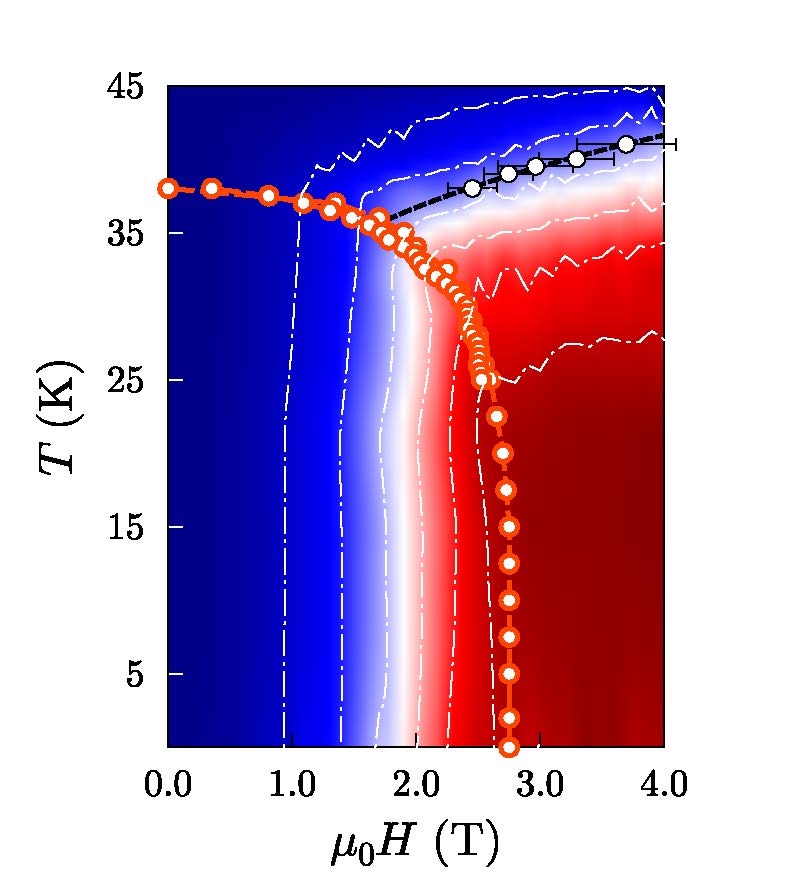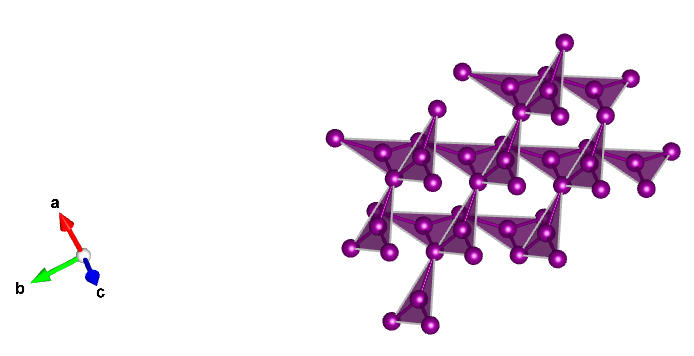
Although the material β-Li2IrO3 is not quite a true Kitaev spin liquid, this study provides some new and tantalizing hints about possible ways to realize that elusive state of matter. The demonstration that this particular system could be induced to transition from an incommensurate to a field-induced zig-zag (FIZZ) state with the application of a small magnetic field shows that the exchange interactions in these magnetic honeycomb iridates are delicately balanced and ready to tip from one state to another with a properly placed nudge. At this point, the key to a quantum spin liquid appears to be merely a matter of a little fine tuning.

The field-induced change in the quantum state is manifested in the magnetization as an abrupt kink at µ0H*= 2.8 Tesla. Studying the magnetic peak at propagation vector q = (-0.574, 0, 16) to examine the incommensurate state, the research team found that scattering intensity rapidly diminishes but with unchanging wavevector, indicating suppression of the incommensurate order vanishing completely at H*.
Beyond H*, thermodynamic data show a smooth crossover from one phase to another, but without a sharp phase boundary. However, the experimenters observed changes in the MRXS intensity at some reciprocal lattice vectors, corresponding to both structurally allowed and structurally forbidden peaks. The presence of the latter indicates an additional q = 0 broken symmetry induced by the applied magnetic field. Also, the structurally forbidden peaks show enhancement at the Ir L3 edge with the magnetic field applied, suggesting that this broken symmetry state is electronic in origin.
The experimenters note that the observed behavior is quite different from the typically seen first-order phase transitions, such an antiferromagnetic to spin-polarized state. In this case, all broken symmetry states are seen simultaneously, yet retain intrinsic periodicity as a function of the applied field, showing a near-degenerate state.
Two types of symmetries are consistent with the data, one with zig-zag symmetry and the second ferromagnetic character, each of which explains different aspects of the observations. The research team suggests that the best interpretation is a high temperature transition from a trivial paramagnet to a low-temperature quantum correlated state. Even a small magnetic field is seen to drive β-Li2IrO3 from a zero-field incommensurate spiral order into a FIZZ state. This provides further evidence of the link between lithium-based iridates such as β-Li2IrO3 and other compounds such as α-RuCl3/Na2IrO3 that also display a commensurate zig-zag phase. — Mark Wolverton
See: Alejandro Ruiz1,2*, Alex Frano1,2, Nicholas P. Breznay1,2, Itamar Kimchi1,3, Toni Helm1,2, Iain Oswald4, Julia Y. Chan4, R.J. Birgeneau1,2, Zahirul Islam5, and James G. Analytis1,2**, “Correlated states in β-Li2IrO3 driven by applied magnetic fields,” Nat. Commun. 8, 961 (16 October 2017). DOI: 10.1038/s41467-017-01071-9
Author affiliations: 1University of California, Berkeley, 2Lawrence Berkeley National Laboratory, 3Massachusetts Institute of Technology, 4The University of Texas at Dallas, 5Argonne National Laboratory
Correspondence: *alejandro@berkeley.edu, **analytis@berkeley.edu
This work was supported the U.S. Department of Energy (DOE Office of Science-Basic Energy Sciences, Materials Sciences and Engineering Division, under the Early Career program, Contract No. DE-SC0014039. A.R. acknowledges support from the National Science Foundation (NSF) Graduate Research Fellowship under Grant No. DGE 1106400. I.A. and J.Y.C. acknowledge the support of NSF DMR-1360863. N.P.B. and T.H. were supported by the Gordon and Betty Moore Foundations EPiQS Initiative through Grant GBMF4374. This research used resources of the Advanced Photon Source, a U.S. DOE Office of Science User Facility operated for the DOE Office of Science by Argonne National Laboratory under Contract No. DE-AC02- 06CH11357.
Argonne National Laboratory seeks solutions to pressing national problems in science and technology. The nation's first national laboratory, Argonne conducts leading-edge basic and applied scientific research in virtually every scientific discipline. Argonne researchers work closely with researchers from hundreds of companies, universities, and federal, state and municipal agencies to help them solve their specific problems, advance America's scientific leadership and prepare the nation for a better future. With employees from more than 60 nations, Argonne is managed by UChicago Argonne, LLC for the U.S. Department of Energy's Office of Science.
The U.S. Department of Energy's Office of Science is the single largest supporter of basic research in the physical sciences in the United States and is working to address some of the most pressing challenges of our time. For more information, visit the Office of Science website.
